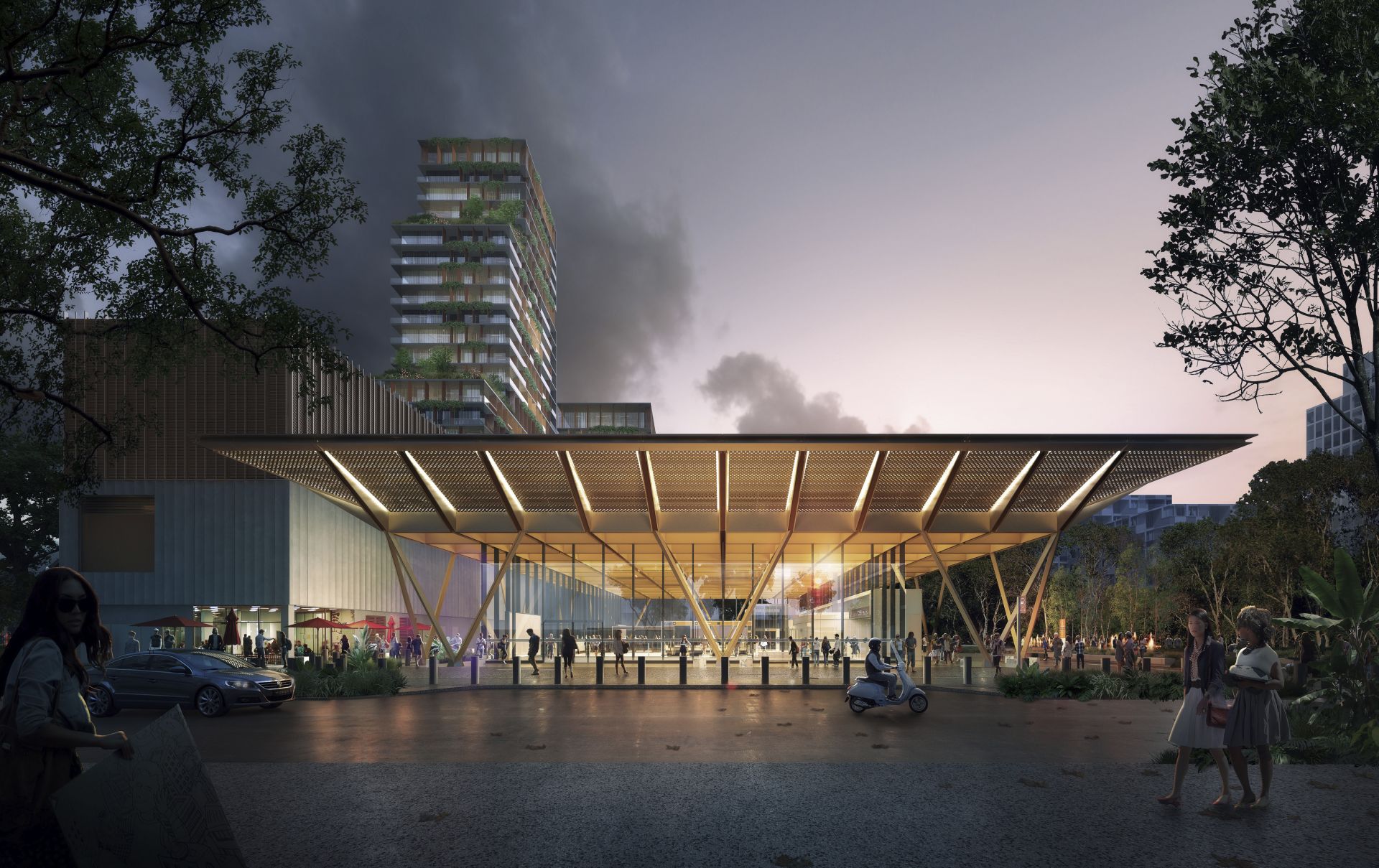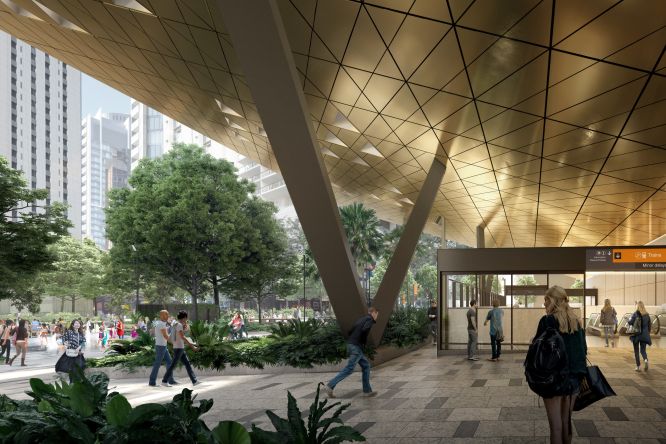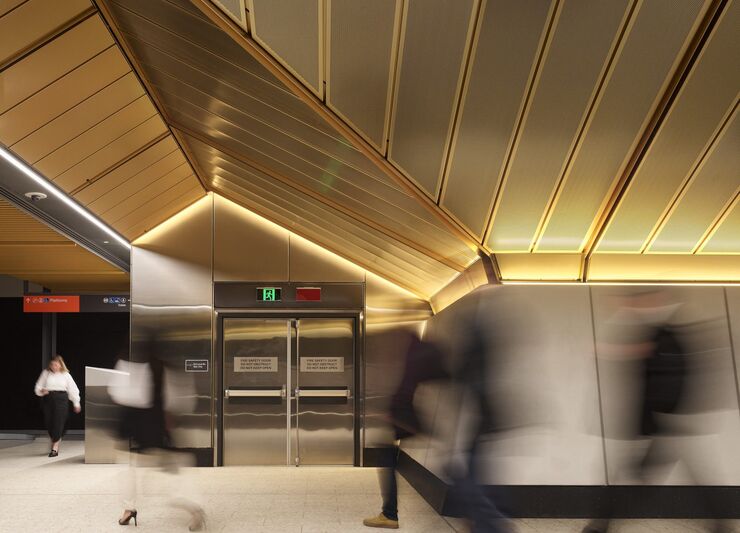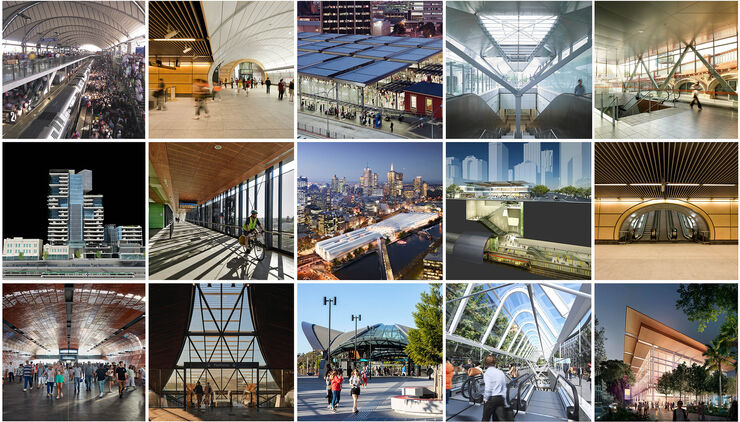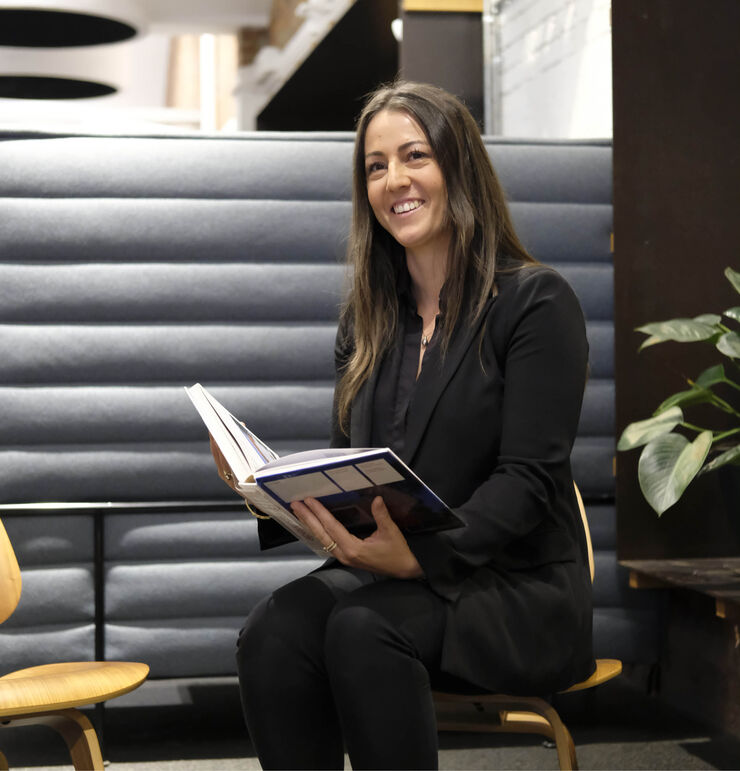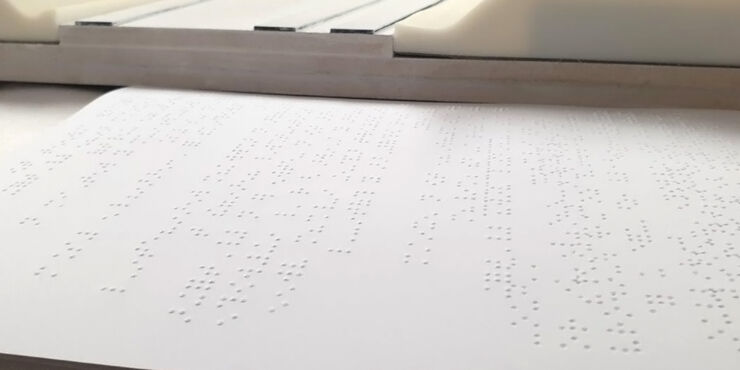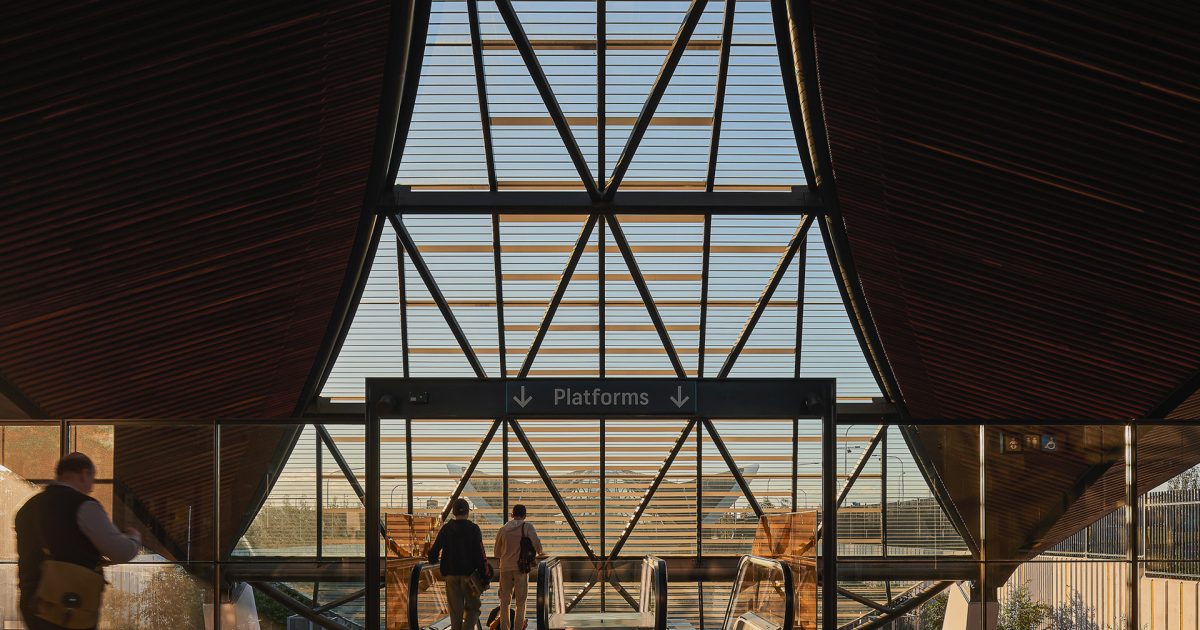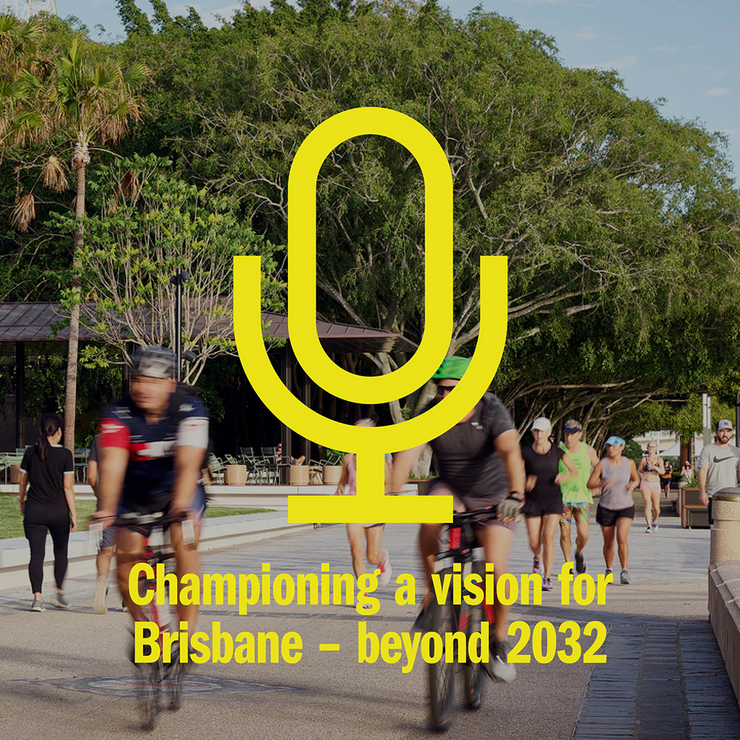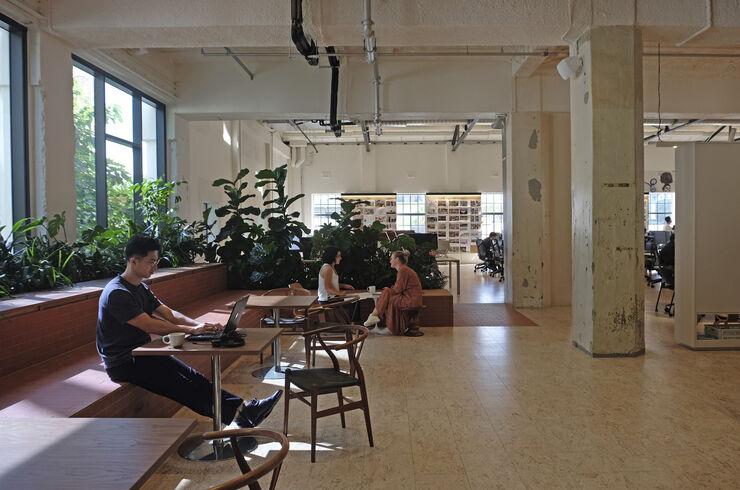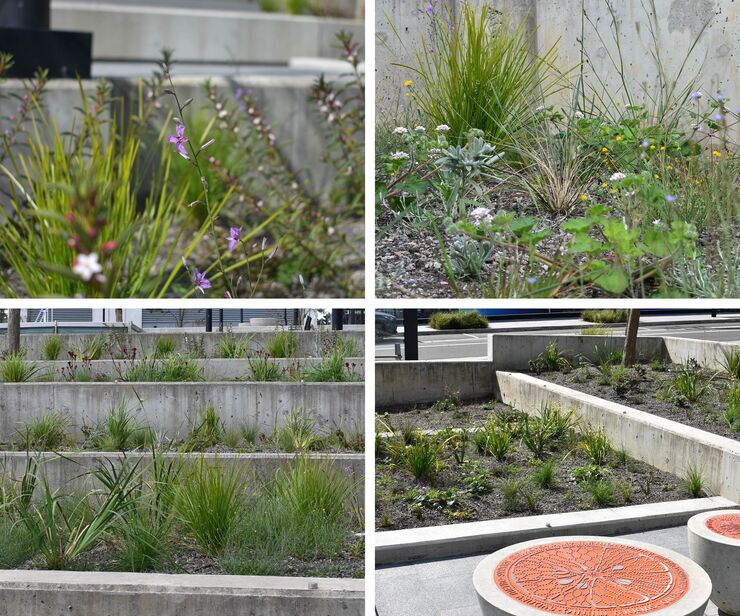Underground stations
Roma Street — a new gateway
The station at Roma Street will become the state’s most significant transport interchange — like a ‘Grand Central’ connecting passengers with a range of suburban, regional and interstate bus and rail services.
The new station entry and plaza return civic grandeur to the life of the street and restore sightlines to the historic 1873 Roma Street Station building. The plaza will come to life as a destination and gathering place during city-wide events and festivals.
Albert Street — a new destination
The new Albert Street Station will be the first train station in the city centre in more than 120 years. Its dramatic, cantilevered entrance canopy will be a new Brisbane landmark, while its shady, landscaped forecourt will shelter and attract public events like performances or pop-ups.
A commitment to removing cars from two city blocks in favour of a vibrant public realm strengthens the precinct’s ‘Green Spine’, linking Roma Street Parklands to the City Botanic Gardens with shady and pedestrian-friendly streets.
Woolloongabba — the Olympic Station
Woolloongabba Station will provide the famous ‘Gabba’ Stadium with a train connection for the first time, facilitating the fluid movement of passengers during peak events like the 2032 Olympic and Paralympic Games Opening Ceremonies.
As a ‘Pavilion in the Park’, the station gives alighting passengers a direct view of the stadium and fosters the big-game build-up as commuters make the station-to-stadium journey on foot.
Boggo Road — a community connector
Boggo Road Station takes train passengers underground to improve community connections at street level around the PA Hospital and Boggo Road Urban Village. This enables Brisbane’s ‘Knowledge Corridor’ to connect to the city from the south.
Passengers will travel from the Gold Coast (South) and Cleveland (East) to Southbank and Brisbane CBD and beyond to the north through this complex underground infrastructure junction. While above ground, a new pedestrian bridge will stitch together rail, bus and active transportation.
Aboveground stations
Exhibition Station — a nod to Brisbane’s showground history
The design of the Exhibition Station captures the spirit of the adjacent Brisbane Landmark — the John MacDonald Stand. The new architecture references the pavilion roof, column structure and grounded brick base of the historic grandstand translating these into contemporary canopy forms and sun-lit commuter platforms.
The extensive station upgrade transforms the experience of arriving at Brisbane’s agricultural showground from an annual event to a daily occurrence, providing a new stop-and-go service for a key growth area of Brisbane.
Dutton Park to Salisbury Line — access for all
Seven station expansions and upgrades between Dutton Park and Salisbury will make train travel between Brisbane and Gold Coast more inclusive, frequent, and comfortable. Individual stations are designed with a sensitivity to the scale and character of their surroundings and the needs of local communities to ensure safer and better-connected neighbourhoods.
Commuters with additional access requirements, including vision, hearing and mobility challenges, have been consulted and accommodated through an extensive user engagement process championed by our approach; nothing about us without us.
Sustainability
UNDERGROUND STATIONS
In early 2023, the Infrastructure Sustainability Council awarded our underground stations with an industry-leading, certified design rating of 81.7 points. Our design drivers for this rating include:
Natural Ventilation
The four underground stations were briefed to be fully air conditioned. We took the approach that user comfort and experience would be vastly improved if the ground level station entrances were naturally ventilated. These open, breezy spaces help to minimise energy consumption while recalling the shady coolth of nature.
Natural Light
“Wherever we can, we try to bring daylight as deep underground as possible using voids and light shafts. We know, psychologically, that the deeper you can get natural light the more comfortable people are with going underground.”
— Keith Allen, Principal
Urban Design
The urban design approach centres on ‘extending the project beyond the ticket line’ by creating green gateways and interfaces between the city and station entrances. The public realm is designed to be a uniquely Brisbane experience incorporating generous greenery and subtropical plant species to create welcoming and cool environments for the warm-weather city.
To ensure maximum shade and amenity from opening day, 400 mature trees are currently being nurtured through an early tree procurement program.
ABOVE-GROUND STATIONS
Our approach; nothing about us without us, was central to achieving an ambitious social sustainability agenda and championing mobility equity for commuters across the network.
“From the outset, there was a general acknowledgement that our project is about breaking down barriers to public transport use for all – and all abilities. We’re not only building infrastructure but guiding change within the industry through the accessibility outcomes we’re implementing.”
— Cobi Murphy, Customer and Network Change Lead, Cross River Rail Delivery Authority
Design team
Tunnel, Stations + Development team:
Caroline Diesner, Julieanne Boustead, Keith Allen, Kevin Lloyd, Dan Kallis, Emma Townsend, Ewen Wright, Peter Monckton, Reuben Bourke, Alexandra Chow, Allison Hortz, Andrew Currie, David Gowty, Manfred Cheng, Michael Copeland, Adrian Hanby, Alexandra Stewart-Long, Alfred La Spina, Alvedin Hukicevic, Angela Hind, Antonio Canero Santisteban, Beatriz Perez Codesido, Ben Wilson, Brent Staiger, Bridie O’Toole, Camila Pereira, Celeste Norman, Claire Buscombe, David Zito, Elizabeth Nel, Erzhena Kukhareva, Fran Lopez, Garry Schmieirer, Graham Lowe, Haley Nguyen, Hanez Gatpo, Harrison Segat-Stallan, Hayley Connelly, Irene Liu, Jacob Kinging, Jancie Lau, Jared Thorp, Jaz Setiadi, Jennifer Greatrex, Jessica Sandford, Jiale Gui, Joanna Newton, Jonard Cueto, Kate Humphries, Katherine Rumble, Katia Gard, Katie Holman, Kristina Fefelova, Lennon Lau, Lewis Orgar, Liam Cridland, Lorraine Choi, Macushla Peek, Matthew Daley, Matthew Moore, Peter Flynn, Rob Hardie, Rocco Dascoli, Rod Marshall, Rhys Probert, Sanjiv Malham, Steph Cook, Steve Foro, Sunnie Ng, Tanya Walsh, Tatiana Lysova, Wayne Ching, Wenjin Wang, Will Smith, Ylva Reddy, Yolanda Espinar Garcia, and Geoff Crowe.
Rail, Integration + Systems team:
Keith Allen, Tanya Golitschenko, Ainsley Wynne, Cameron Lauder, Carlos Munoz Moreno, Cheong Lay Kuen, Clayton Bray, Guy Grigson, Katie Devitt, Natalie Smart, Ralph Valencia, Ryan Martin, Stacey Kenna, Zoe Kudeborg.
